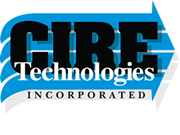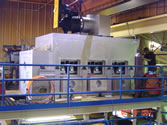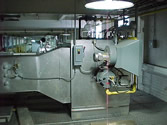Log in
Cire Technologies Blog
Principles of Direct Impingement Dryer Design Series – Paper No. 3 of 8
Process Data Used to Design the Impingement Dryer
It is important to understand the best method to dry your product. The following is a partial list of what is important for the designer to know:
- What are the product(s) that are going to be processed in the dryer?
- What are the substrate(s)? What are the substrate properties and are there variations to substrate thicknesses?
- What are the typical, minimum and maximum web widths?
- Is there drying required? Curing? Heat treatment?
- Is this one sided or two sided heating/drying?
- What is the heat source? Gas, oil, electric, waste heat recovery?
- What are typical and maximum web speeds desired for the full range of products to be processed through the dryer?
- Is the diluent water or are solvents present?
- What is the coating or print characteristics? Percent solids by weight and type of liquid(s) are used in the solution?
- What is the wet or dry laydown, typical and maximum (worst) cases?
- What are the product temperature limitations and if required the temperature needed to meet curing, cross linking or other process characteristics?
- What limitations are there on the rate of heat transfer? This often limits the heat transfer rate you can apply to the web, particularly for heavier coatings.
- What are the plant physical limitations on dryer dimensions?
- What spacing is required for web support through the dryer and will the dryer utilize web wrap on the rolls to drive the rolls or will they be driven?
With the product data you can calculate the product load and determine the dryer configuration that would best produce your product. System characteristics such as the number of zones, type, size and spacing of impingement nozzles, nozzle to web gap distance (length of throw), nozzle slot width, nozzle air velocity and air temperature all factor into the design of the optimal impingement dryer for your process. In later papers we will discuss these factors in more detail.
In our next paper we will examine how we determine the heat transfer necessary to process the web in the impingement dryer. This is defined as the product load.
When you subscribe to the blog, we will send you an e-mail when there are new updates on the site so you wouldn't miss them.





Comments